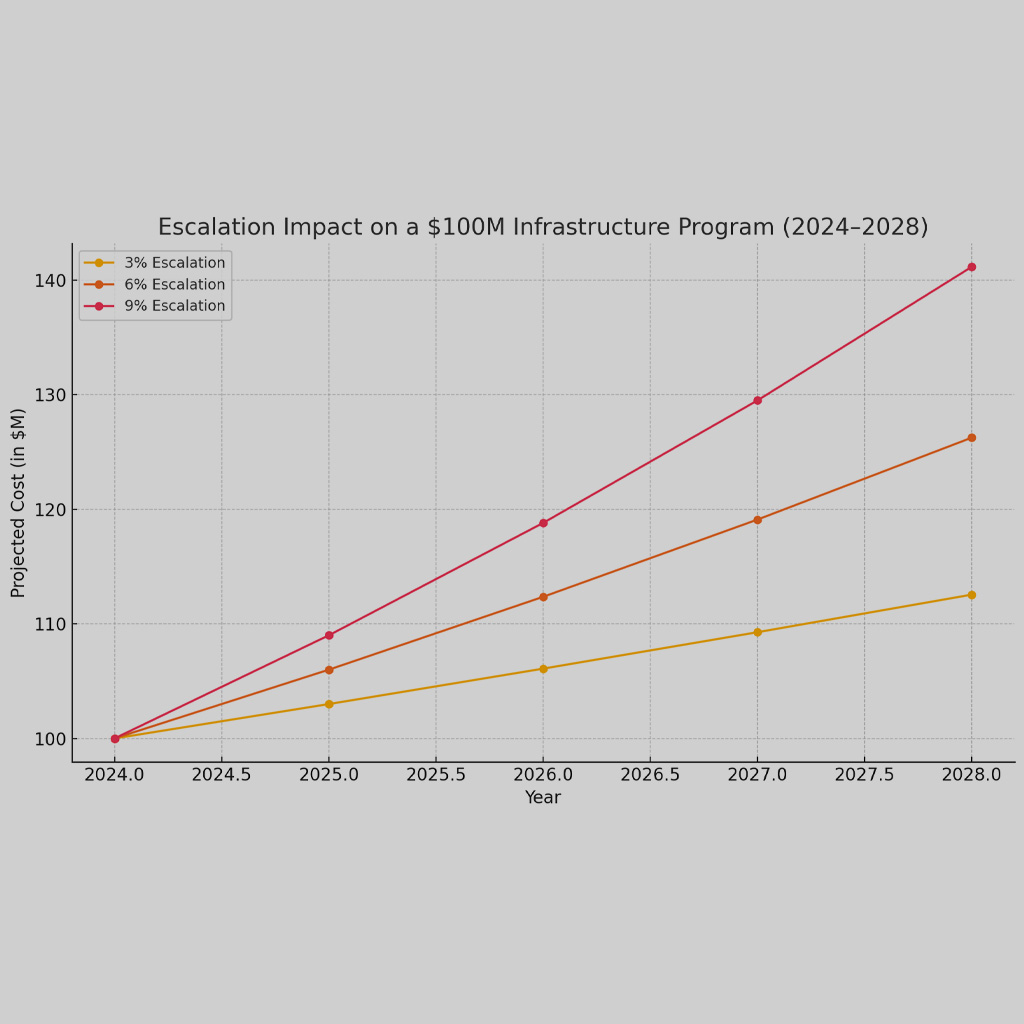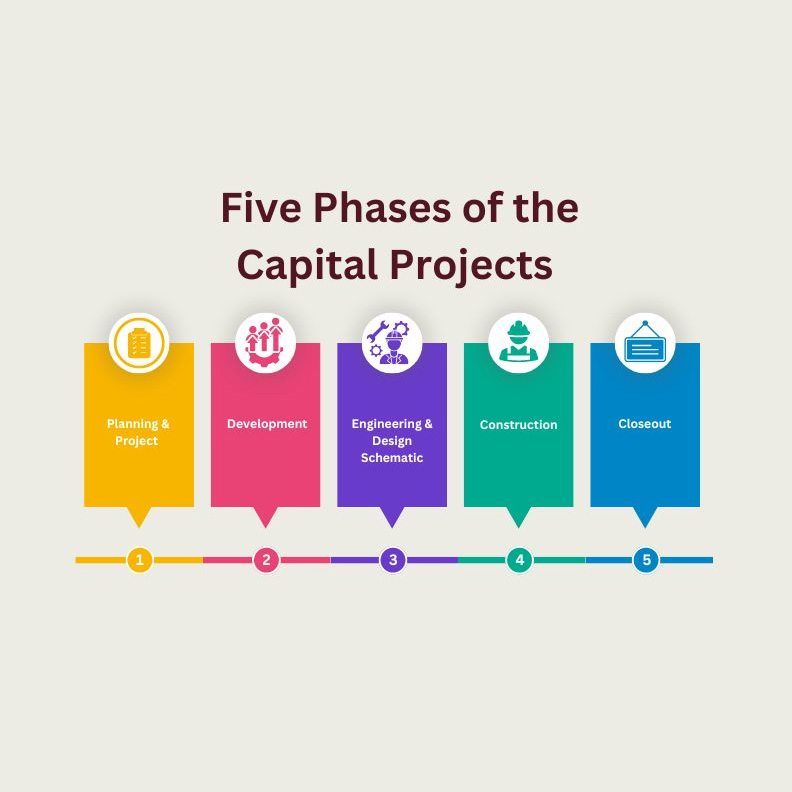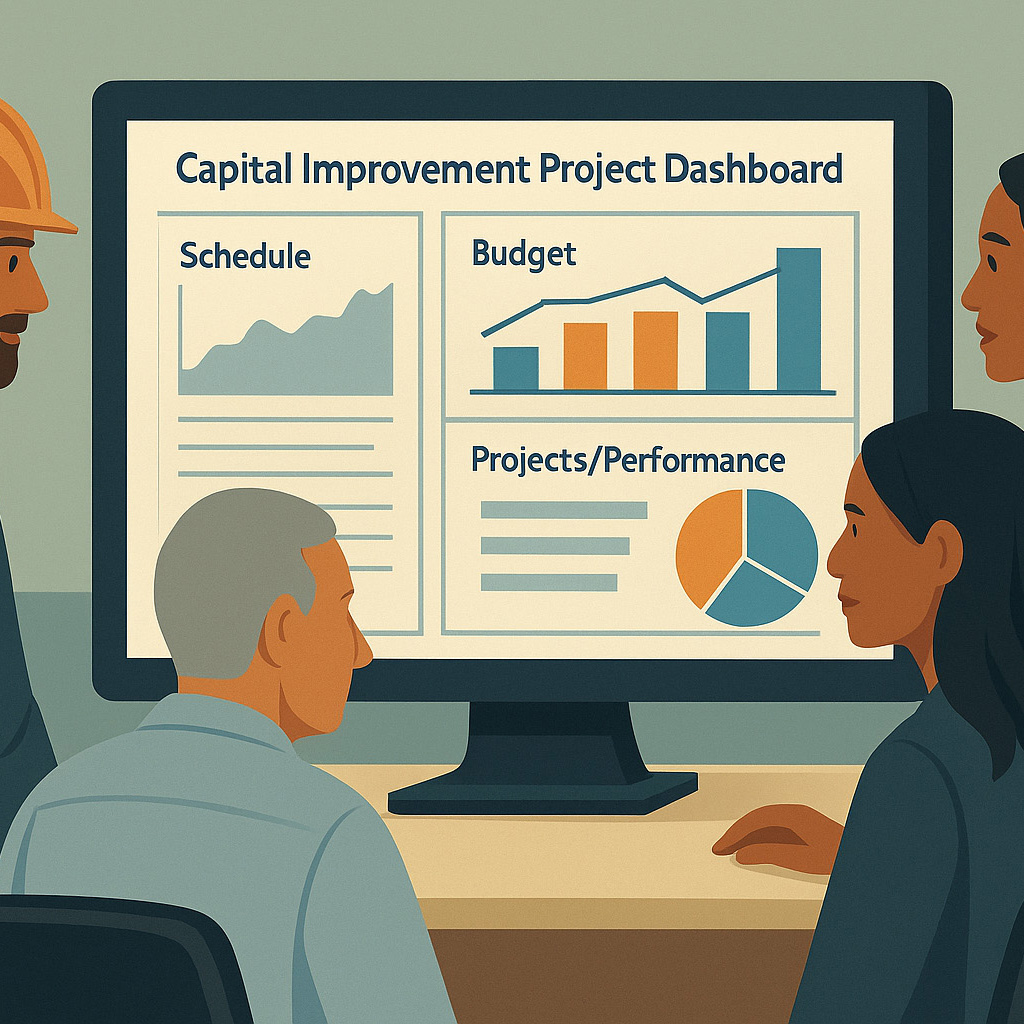“Plans are nothing; planning is everything.” –Dwight D. Eisenhower
Capital Improvement Programs (CIP) are crucial for the development and maintenance of a municipality’s infrastructure. These programs can significantly impact the community by improving public facilities, transportation networks, and utilities. However, before deciding to initiate a CIP bond program, municipalities must ask themselves several critical questions to ensure the program’s success and sustainability. Here are a few of the big questions that need to be addressed:
1. What are the Community’s Most Pressing Needs?
Identifying and prioritizing the community’s needs is the foundation of a successful CIP bond program. Municipalities must conduct comprehensive needs assessments involving community input, stakeholder consultations, and expert analyses. Key questions include:
- Which infrastructure projects are most critical for the community’s safety, health, and economic development?
- Are there specific areas, such as schools, roads, or public safety facilities, that require immediate attention?
- How will these projects address long-term community needs and growth?
2. What is the Financial Health of the Municipality?
Understanding the municipality’s financial health is paramount before embarking on a CIP bond program. This involves assessing current debt levels, credit ratings, revenue streams, and budget constraints. Key financial questions include:
- What is the municipality’s current debt capacity, and how will issuing new bonds impact it?
- What are the anticipated costs of the proposed projects, and are there contingencies in place for cost overruns?
- How will the repayment of bonds affect future budgets and financial stability?
3. What are the Funding Sources and Financing Options?
Exploring various funding sources and financing options is essential to ensure the program’s feasibility and sustainability. Municipalities should consider:
- Are there federal or state grants, matching funds, or other financial assistance available?
- What are the pros and cons of different financing options, such as general obligation bonds versus revenue bonds?
- How will the bond issuance impact tax rates, and what is the community’s capacity and willingness to support potential tax increases?
4. What is the Long-Term Plan and Vision?
A CIP bond program should align with the municipality’s long-term strategic plan and vision for growth and development. This requires a forward-thinking approach and alignment with broader goals. Critical questions include:
- How do the proposed projects fit into the long-term master plan and zoning regulations?
- What are the projected demographic and economic trends, and how will they impact infrastructure needs?
- How will the CIP bond program contribute to sustainable development and resilience against future challenges, such as climate change or economic fluctuations?
5. What is the Community’s Level of Support?
Gauging community support is vital for the success of a CIP bond program. This involves engaging with residents, businesses, and other stakeholders through public meetings, surveys, and other forms of outreach. Important questions to consider are:
- What are the community’s priorities and concerns regarding infrastructure projects?
- How can the municipality ensure transparent communication and foster trust with the community throughout the project lifecycle?
- What strategies will be employed to build and maintain public support for the bond program?
6. What are the Implementation and Oversight Mechanisms?
Effective implementation and oversight are crucial to ensure that projects are completed on time, within budget, and to the required standards. Key questions include:
- What project management frameworks and tools will be used to oversee the CIP projects?
- How will the municipality ensure compliance with regulatory requirements and standards?
- What mechanisms will be in place for monitoring progress, managing risks, and reporting to stakeholders?
7. What are the Economic and Social Impacts?
Understanding the broader economic and social impacts of the CIP bond program is essential. Municipalities should consider how the projects will contribute to the local economy, job creation, and overall quality of life. Important questions include:
- What are the projected economic benefits of the proposed infrastructure projects?
- How will the projects impact local businesses, property values, and community wellbeing?
- What measures will be taken to ensure that the benefits of the CIP bond program are equitably distributed across the community?
Conclusion
Launching a CIP bond program is a significant undertaking that requires careful consideration and strategic planning. By asking and addressing these critical questions, municipalities can ensure that their CIP bond programs are well-conceived, financially viable, and aligned with the community’s needs and long-term goals. Effective communication, community engagement, and robust project management are essential to the success of these programs, ultimately leading to improved infrastructure and enhanced quality of life for residents.
In summary, the decision to initiate a CIP bond program should not be taken lightly. By thoroughly evaluating the community’s needs, financial health, funding options, long-term vision, community support, implementation strategies, and economic impacts, municipalities can create a solid foundation for successful and sustainable infrastructure development.
At Front Line Advisory Group, we manage Capital Improvement programs to ensure they are completed on time and within budget. We make sure every dollar is used wisely to improve our community. For more information or to start your project, contact us at info@frontlineadvisorygroup.com.













